Best
Oboe for Beginners
-
Overall: Constructed with an ABS resin body
-
Best Feature: Features a semiautomatic, simplified conservatoire system that makes playing and learning easier
-
TedScore™: 9/10
Best
Overall
Intermediate Oboe WITH EXQUISITE LOOKS
AND A RICH SOUND
-
Overall: Boasts an aged and seasoned grenadilla wood
body that produces a professional sound -
Best Feature: A semiautomatic octave system
-
TedScore™: 10/10
Best
Clarinet
-
Overall: Built with a bore design based on the popular E13 clarinet from Buffet
-
Best Feature: Created from co-polymeric ABS instead of wood, which requires less maintenance
-
TedScore™: 9/10
Are you interested in learning the differences between the oboe and clarinet? Both instruments are popular in orchestras and bands but have distinct features that set them apart.
In this article, I’ll explore the differences between oboe vs clarinet, including their sound, construction, and playing techniques.
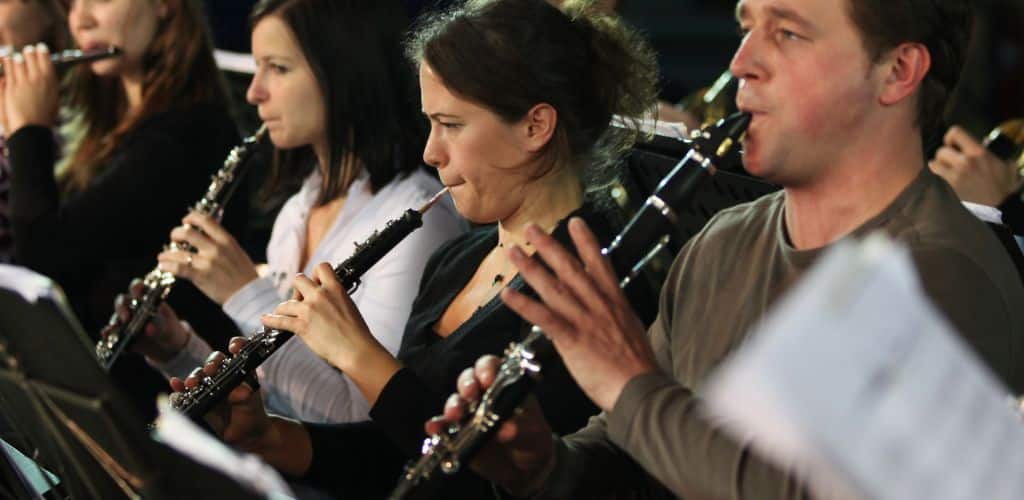
By the end of this article, you’ll better understand these two instruments and which one might be right for you.
Whether you’re a beginner looking to choose between the two instruments or a seasoned musician interested in expanding your skills, this article will provide valuable insights into the world of oboe vs clarinet.
What's an Oboe?
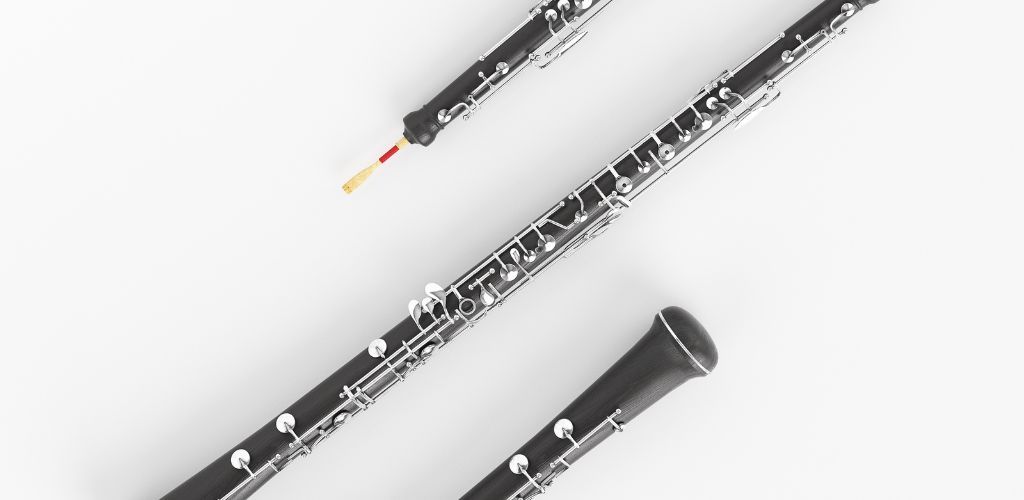
The oboe is a woodwind instrument made of wood (typically grenadilla, rosewood, or cocobolo) and has a slender, cylindrical shape.
It’s about two feet long and has a thin metal tube inserted into the instrument’s top called a reed.
One of the things that makes the oboe unique is its sound. It has a distinctive tone often described as nasal or reedy.
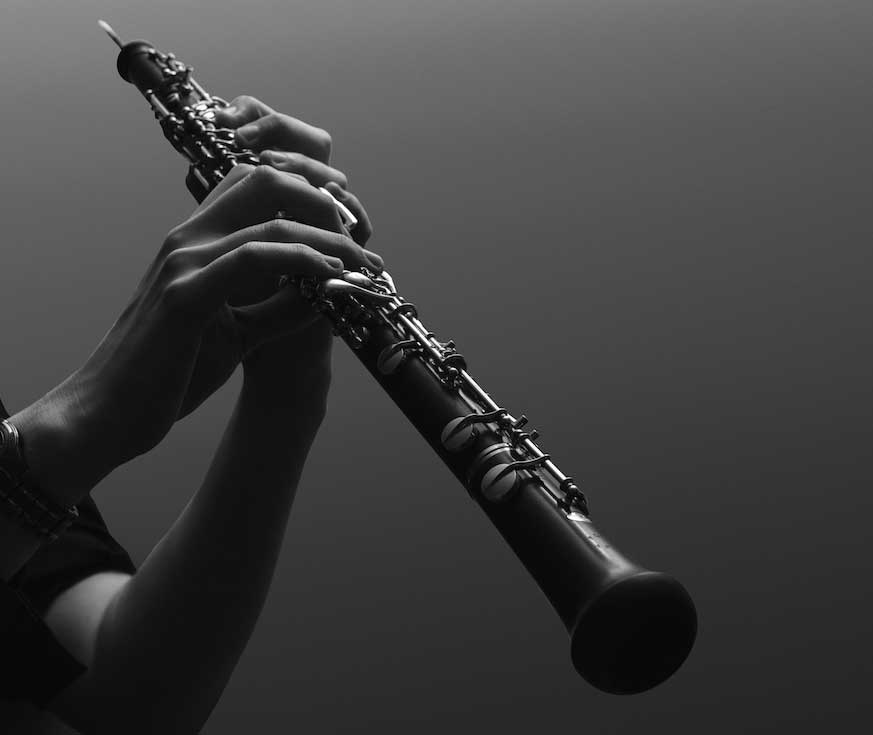
Another thing that sets the modern oboe apart from other woodwind instruments is its range.
It’s a versatile instrument that can play high and low notes, making it a popular choice for orchestral music.
It’s often used to play solos or to provide a counterpoint to other instruments in the orchestra.
What's a Clarinet?
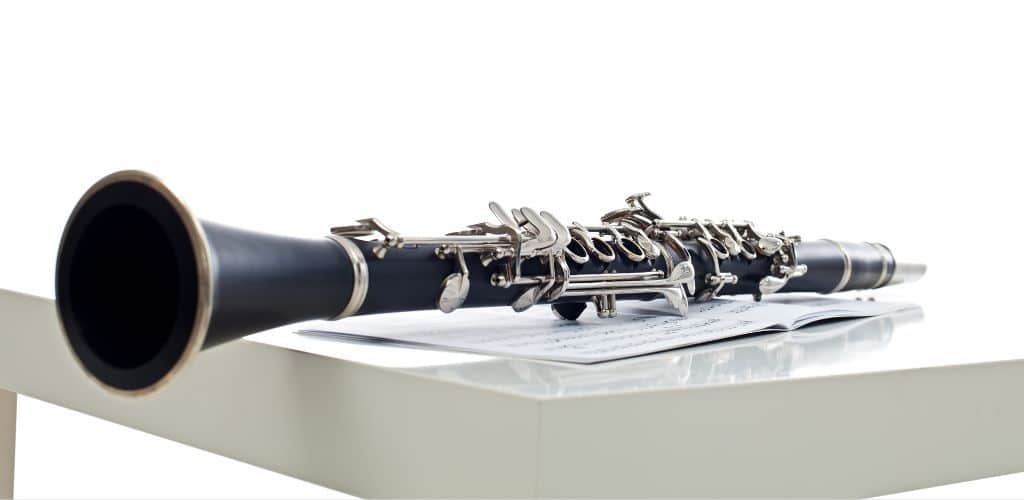
A clarinet is a musical instrument that belongs to the woodwind family. It consists of a long, cylindrical tube with a small, flared bell at one end and a mouthpiece at the other.
The mouthpiece has a single reed made from a thin piece of cane that vibrates when air is blown through it.
The player uses their fingers to press down on a series of keys, which control the pitch and produce different notes.
Clarinet music can be found in various genres, from classical to jazz to pop.
It’s a versatile instrument that can be played solo or as part of an ensemble, such as a band or an orchestra.

Types of Clarinets and Oboes
CLARINETS
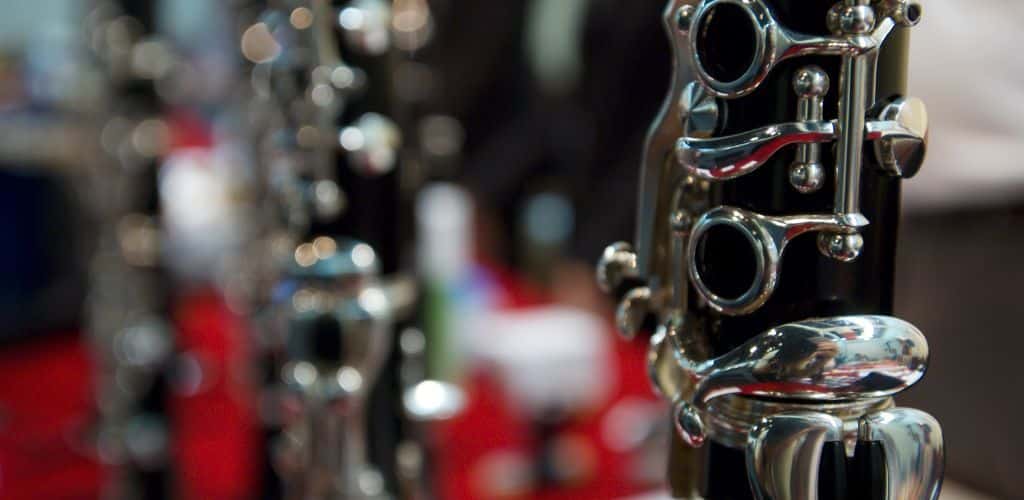
There are several types to choose from when it comes to clarinets. The most common type is the Bb clarinet, which is used in many different genres of music, including classical, jazz, and pop.
Other clarinets include the A clarinet, often used in orchestral music, the alto clarinet, and the bass clarinet, which has a lower range and a richer, more mellow tone.
There’s also the contra-alto clarinet, soprano clarinet, bass clarinet, and contrabass clarinet.
The piccolo clarinet is used only in Italian military music, while bands widely use the sopranino clarinet for concerts.
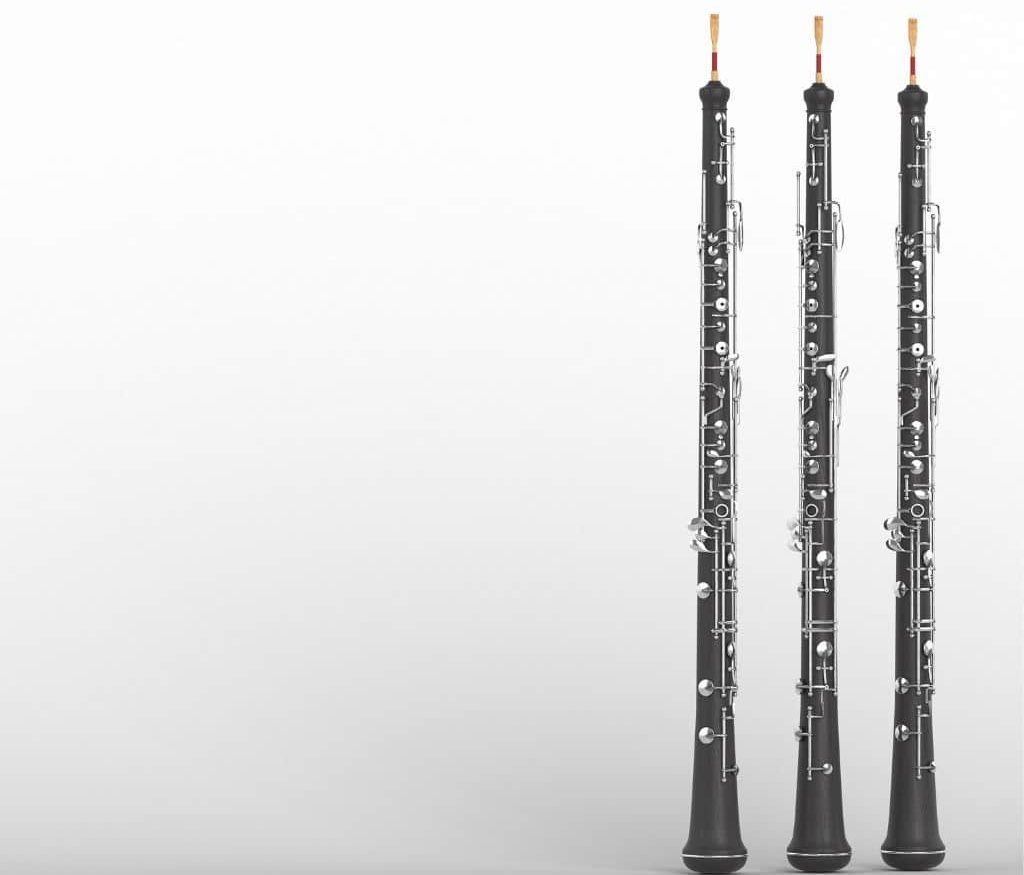
OBOES
The oboe family is smaller than the clarinet family, but there are still a few different types.
The main types of oboes include Cor Anglais and Oboe d’amore. Cor Anglais comes with the F pitch, whereas oboe d’amore comes with A pitch.
The third type of oboe is called the bass oboe, which comes with an octave sound lower than the generally used oboe.
Key Differences Between Oboe and Clarinet
Regarding sound and tone, the oboe and clarinet are quite different. The oboe has a unique nasal sound often described as reedy or haunting.
On the other hand, the modern clarinet has a warmer, more mellow sound that is often described as smooth or silky.
Both musical instruments require a certain level of skill to play, but the oboe is generally considered more difficult due to its smaller reed and the need for precise embouchure control.
The clarinet is still challenging, but it’s often considered more accessible for beginners.
One of the biggest differences between the oboe and clarinet is the pitch at which they are tuned. The oboe is typically tuned to the key of C, while the clarinet is typically tuned to the key of Bb.
This means that they play different notes when the same fingerings are used. As a result, musicians who play both instruments need to be careful to adjust their playing accordingly.
While both instruments are commonly used in classical music, the clarinet is more versatile in terms of the genres it can be used in. It’s often used in jazz, folk, and even pop music.
Conversely, the oboe is primarily used in classical music and is rarely found in other genres.
The mouthpieces of the oboe and clarinet are quite different as well. The oboe has a very narrow, cylindrical mouthpiece that requires a double reed to play.
In contrast, the clarinet has a wider, conical mouthpiece with a single reed. This has an impact on the sound that each instrument produces, as well as the technique required to play them.
Finally, the playing style of the oboe and clarinet is quite different. The oboe requires a very special embouchure (how the lips are shaped to blow into the instrument) to produce clean and clear sound.
It also requires a great deal of breath control, as the reed must be kept open for the duration of each note.
Conversely, the clarinet has a more relaxed embouchure and requires less breath control.
The clarinet is generally more popular than the oboe in terms of the number of players and the number of pieces written for the instrument.
However, the oboe still has a dedicated following and is an important instrument in many orchestras and ensembles.
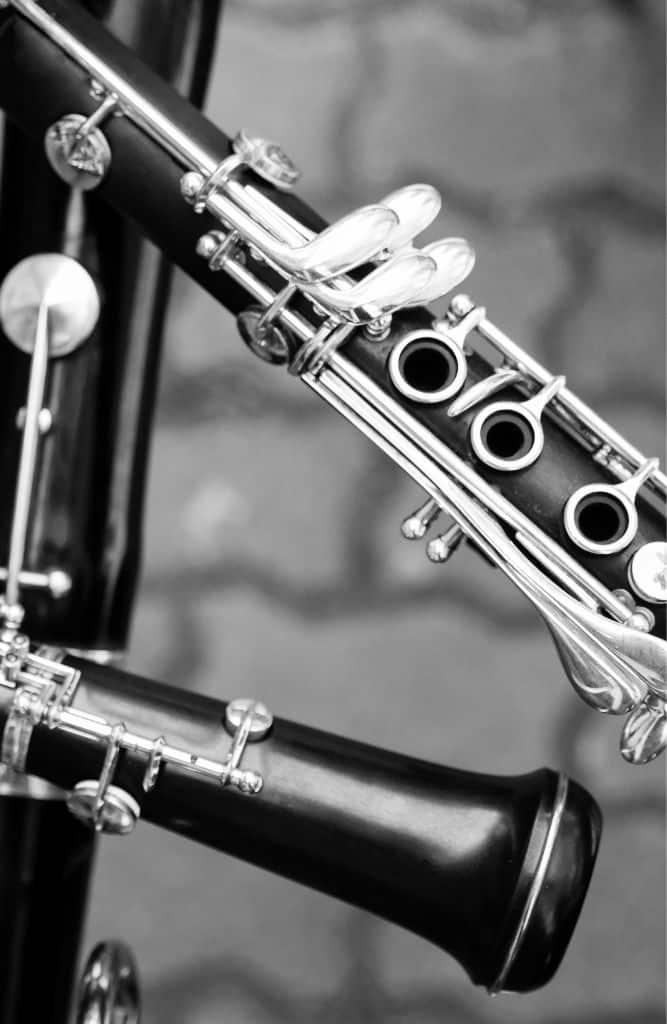
3 Best Oboe Brands on the Market
Yamaha YOB241B30 Student Oboe

FEATURES: Constructed with an ABS resin body
OTHER INFO: Features a semiautomatic, simplified conservatoire system that makes playing and learning easier
- Produces a warm tone similar to that of wooden instruments
- Designed to facilitate learning and playing
- Includes a 200 Series Case
- Due to its resin material, the oboe may require more frequent maintenance
When you click ‘Check Price’, you’ll see there are loads of great places to buy this item. Our personal favorite is Sweetwater for the US, and Thomann and Gear4Music for the UK & Europe.
They are the largest music retailers, with excellent customer service, competitive prices, really fast shipping, and the longest guarantees.
The professional musician who wrote this article combined many things,
from the product build, manufacturer’s reputation through to feedback
from other users, to create our famous TedScore™.
Yamaha YOB431B Intermediate Oboe

DESIGNED FOR: advancing players
FEATURES: Boasts an aged and seasoned grenadilla wood body that produces a professional sound
OTHER INFO: A semiautomatic octave system
Yamaha YOB431B Intermediate Oboe
- Keys are hand-adjusted by experienced artisans for optimal response
- Crafted with precision to deliver a balanced response and exquisite tone
- Comes with a 400 Series Case
- More expensive than other intermediate models
When you click ‘Check Price’, you’ll see there are loads of great places to buy this item. Our personal favorite is Sweetwater for the US, and Thomann and Gear4Music for the UK & Europe.
They are the largest music retailers, with excellent customer service, competitive prices, really fast shipping, and the longest guarantees.
The professional musician who wrote this article combined many things,
from the product build, manufacturer’s reputation through to feedback
from other users, to create our famous TedScore™.
Yinfente Professional Oboe
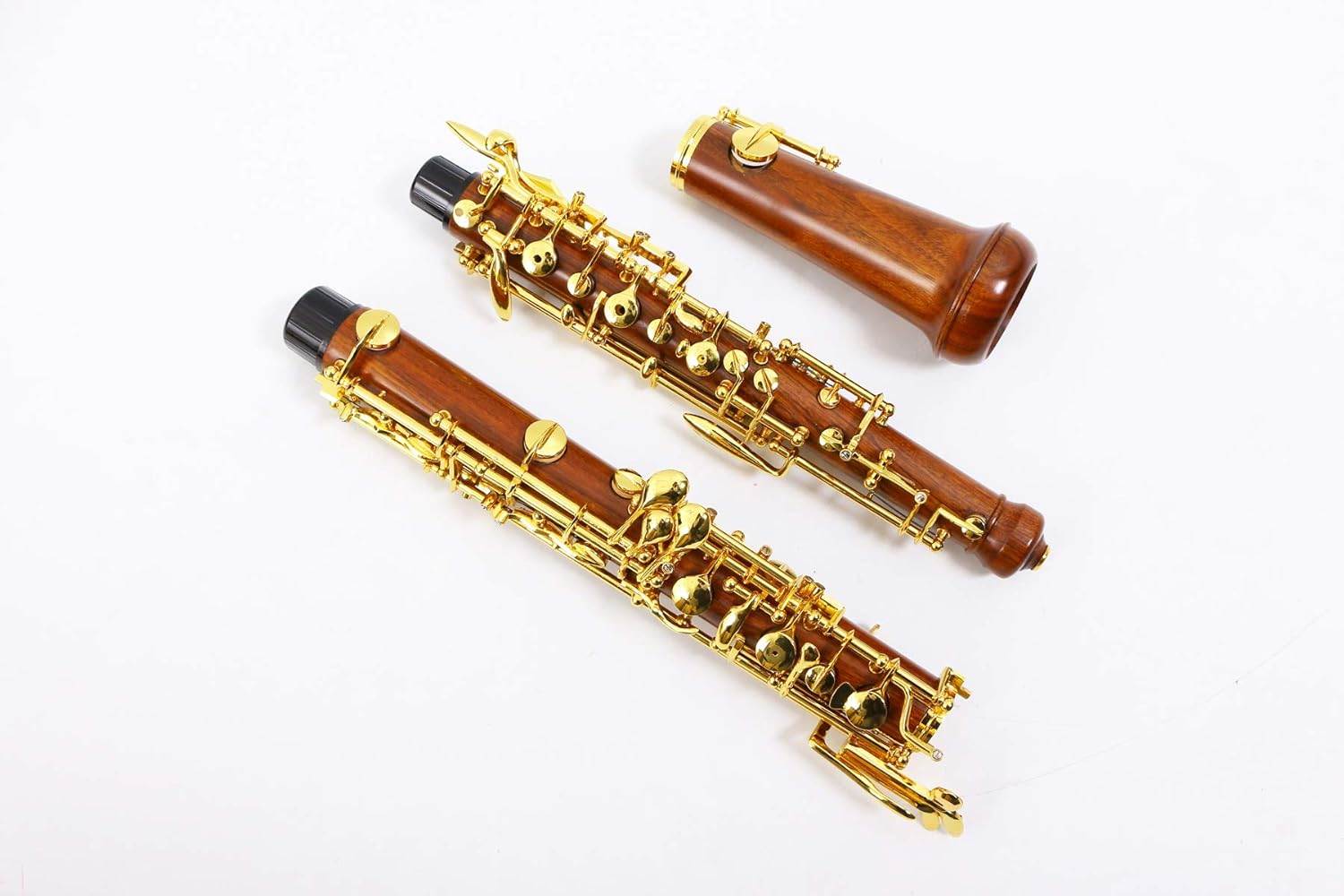
FEATURES: Created from Rosewood or Ebonite wood
OTHER INFO: Features a C key with left F resonance and a semi-automatic system
- The intonation has been adjusted for professional use
- More affordable option for a professional player
- Includes a high-quality case and cover
- A relatively new and lesser-known brand
When you click ‘Check Price’, you’ll see there are loads of great places to buy this item. Our personal favorite is Sweetwater for the US, and Thomann and Gear4Music for the UK & Europe.
They are the largest music retailers, with excellent customer service, competitive prices, really fast shipping, and the longest guarantees.
The professional musician who wrote this article combined many things,
from the product build, manufacturer’s reputation through to feedback
from other users, to create our famous TedScore™.
3 Clarinet Recommendations for Beginners
Elkhart 100CL Student Clarinet

FEATURES: Made with ABS and Ebonite composite construction, providing excellent and authentic intonation
OTHER INFO: Comes with a silver-plated keyword
Elkhart 100CL Student Clarinet
- Has a 17-key Boehm system
- Easy to play and can withstand heavy handling
- Comes with a backpack-style canvas carry case
- The thumb-rest is not adjustable
When you click ‘Check Price’, you’ll see there are loads of great places to buy this item. Our personal favorite is Sweetwater for the US, and Thomann and Gear4Music for the UK & Europe.
They are the largest music retailers, with excellent customer service, competitive prices, really fast shipping, and the longest guarantees.
The professional musician who wrote this article combined many things,
from the product build, manufacturer’s reputation through to feedback
from other users, to create our famous TedScore™.
Yamaha YCL255S Student Bb Clarinet

FEATURES: Durable body with an attractive matte finish
OTHER INFO: Has an adjustable thumb-rest for proper technique
Yamaha YCL255S Student Bb Clarinet
- With a new bell with improved response and projection
- Comes with silver-plated nickel silver keys for added luxury
- Perfect for wind bands or orchestras
- Comes with a lightweight carry case and a Yamaha 4C mouthpiece
- A little expensive for a beginner instrument
When you click ‘Check Price’, you’ll see there are loads of great places to buy this item. Our personal favorite is Sweetwater for the US, and Thomann and Gear4Music for the UK & Europe.
They are the largest music retailers, with excellent customer service, competitive prices, really fast shipping, and the longest guarantees.
The professional musician who wrote this article combined many things,
from the product build, manufacturer’s reputation through to feedback
from other users, to create our famous TedScore™.
Buffet Prodige Bb Clarinet

FEATURES: Built with a bore design based on the popular E13 clarinet from Buffet
OTHER INFO: Created from co-polymeric ABS instead of wood, which requires less maintenance
Buffet Prodige Bb Clarinet
- Its design is simple, featuring 17 keys and 6 rings, which are standard for clarinets
- Features the quintessential Buffet design
- Includes everything needed to get started
- Higher price range for a beginner clarinet
When you click ‘Check Price’, you’ll see there are loads of great places to buy this item. Our personal favorite is Sweetwater for the US, and Thomann and Gear4Music for the UK & Europe.
They are the largest music retailers, with excellent customer service, competitive prices, really fast shipping, and the longest guarantees.
The professional musician who wrote this article combined many things,
from the product build, manufacturer’s reputation through to feedback
from other users, to create our famous TedScore™.
Oboe Vs Clarinet:
A Recap
In summary, the oboe and clarinet are both members of the woodwind family, but they have different designs, reeds, and sounds.
The oboe uses a conical bore and a double reed, while the clarinet uses a cylindrical bore and a single reed.
The oboe is known for its bright and penetrating sound, while the single reed instrument, the clarinet, produces a mellower tone.
The oboe has a range of about three octaves and is often used in orchestras, chamber music, and as a solo instrument. The clarinet has a slightly wider range and is also used in orchestras, concert bands, and marching bands.
Both instruments have a similar fingering system, but the oboe is considered more difficult to play due to its double reed and the need for proper airflow.
Regarding accessories, both instruments require reeds, ligatures, and barrels to adjust the pitch and tone.
The choice between the oboe and clarinet depends on personal preference, playing style, and musical context.
Whether you want to play in an orchestra, chamber group, or solo, both instruments have their unique qualities that make them worth exploring!
Before you go…
Whatever you choose between these two instruments, there’s a way to enhance your playing experience!
Check out this next article for the 11 Must-Have Accessories for Woodwind Players to add to your toolkit.
FAQ's
Whether the clarinet is better than the oboe is subjective, as both instruments have unique qualities and are used in different musical genres. The clarinet has a wider range of music styles available. It’s generally considered easier to learn, while the oboe has a unique sound and is often used in classical and orchestral music.
A clarinet player can learn to play the oboe, but adjusting to the double-reed mouthpiece and the different fingering will require time and practice. The oboe requires a more precise embouchure and breath control, but a clarinet player can become proficient on both the clarinet and oboe with dedication.
It’s generally not advised to march with an oboe due to the risk of damage to the instrument, the reeds, and yourself. The delicate reeds can easily break, and the humidity and temperature changes on the field can damage wooden oboes. It’s best to switch to a different instrument for the marching band or join color guard.
The choice between learning the clarinet or the oboe depends on your preference and musical goals. The clarinet is generally considered easier to learn. It has a wider range of music styles available, while the oboe has a unique sound and is often used in classical and orchestral music.











Fascinating overview of clarinets and oboes. Your exposition brings to light the nuanced differences between these woodwind instruments, enhancing the reader’s understanding of their unique characteristics. I’m particularly intrigued by the historical evolution of both instruments. Could you possibly recommend additional readings on this subject?
Absolutely loved the section on different types of clarinets and oboes! Didn’t know there were so many varieties till now.
For the clarinet picks for newbies, does brand really make a huge difference? Asking cause budget’s kinda tight.
Hey Katie Bennington, just saw the bit on the best oboe brands and it got me thinking. I’ve been playing the sax in our school band and wondering if the oboe might be a cool switch. How do you reckon the learning curve is gonna be? Like, is it a whole different ball game or are there some skills that’ll transfer over smoothly?
Why not just switch to trumpet? We have more fun! 😉
Jumped from sax to oboe myself! There’s a bit of a curve, especially with embouchure but plenty of skills transfer. Reading music and rhythm helps a lot. You’ll get the hang of it!